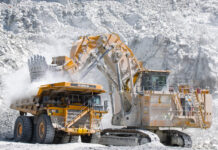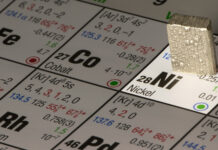
[miningmx.com] — A recent surge in zinc prices has persuaded smelters to ramp up production, but the assumptions they are making about demand from the still troubled steel sector could yet disappoint.
Global zinc output has been rising strongly since the third quarter, with smelters in Russia, Japan, Europe and China all raising output in response to higher prices and an uptick in demand from steel mills.
But the demand surge from mills has been mostly due to restocking, a finite process. Once the process ends, real consumption of steel will have to emerge before the mills can raise output further.
“Demand is improving but it’s nowhere near enough of an improvement to balance the market,” said Giles Lloyd of industry consultants CRU.
“The main source of recovery in demand, a lot of it is restocking (at steel mills) … so you get a one-off consumption pick up,” he said. “They (zinc smelters) will ramp up more quickly than demand rebounds.”
Zinc is mainly used to galvanise steel against corrosion. This use accounts for more than half of global consumption — set to reach 10.76 million tonnes this year, according to the International Lead and Zinc Study Group.
Although the steel sector is recovering in China, the world’s largest producer and consumer of zinc, the recovery in Europe and the United States is weak, and expected to remain so through next year.
Nonetheless zinc prices on the London Metal Exchange surged 16 percent in September and October, outperforming all other LME metals.
But the rally has stalled in November, with prices trading at around $2,240 on Monday, recovering from Friday’s near three-week low but still under pressure from concerns over a possible debt default in Dubai.
For the zinc smelters the cracks in the bull picture have appeared a little late, as they have already committed themselves to following China in hiking output.
Nyrstar, the western world’s biggest zinc smelting entity, is looking to return to full run-rates while Sweden’s Boliden has already done so.
In Japan, the world’s fourth-largest refined zinc producer, top zinc makers plan to produce 15 percent more zinc in the six months to the end of March 2010.
As such, the ILZSG forecasts a 380,000-tonne surplus this year for the zinc market, moving down to a still hefty 227,000 tonnes next year. But talk persists that the actual surplus is far higher.
“The ILZSG is an association of producers, if they say the surplus is 300,000 tonnes read that as 900,000 tonnes minimum. For them to declare a surplus, things must be awfully wrong,” said a London-based trader.
Earlier this month, Antaike, China’s state-backed think tank, said the country’s zinc stocks are expected to reach 970,000 tonnes by the year end, giving credence to the talk.
STEEL DEMAND DOUBTS
Although steel makers across the globe have been bringing back idled capacity in recent months — helping drive up European premiums for physical zinc above $100 a tonne — the outlook for the industry is uncertain.
Steel industry body Eurofer has said the EU steel market will be slow to recover even after the region’s economy starts growing, echoing a growing consensus view amongst industry experts that steel market prospects are good in Asia but not beyond.
“(Steel mills) won’t take the step from 80 percent (capacity) to 90 or 100, they can’t, they’re not getting enough demand,” said Jens Tschentscher, a trader at Thyssenkrupp, Germany’s largest steelmaker.
In other words zinc smelters who raised output may yet find they overplayed their hand, even if the steel sector is slowly emerging from one of the worst downturns in its history.
“I’m positive for 2010, we’re on track but there’s lots of stones on the way,” said Janssen Elmar, a zinc merchant at Grillo Handel, one of the biggest zinc consumers in Europe.
“For the moment we’re just coming back from a depressed market to a normal one, not more, not less. We have normal demand and volumes, but not at 2008 levels.”










